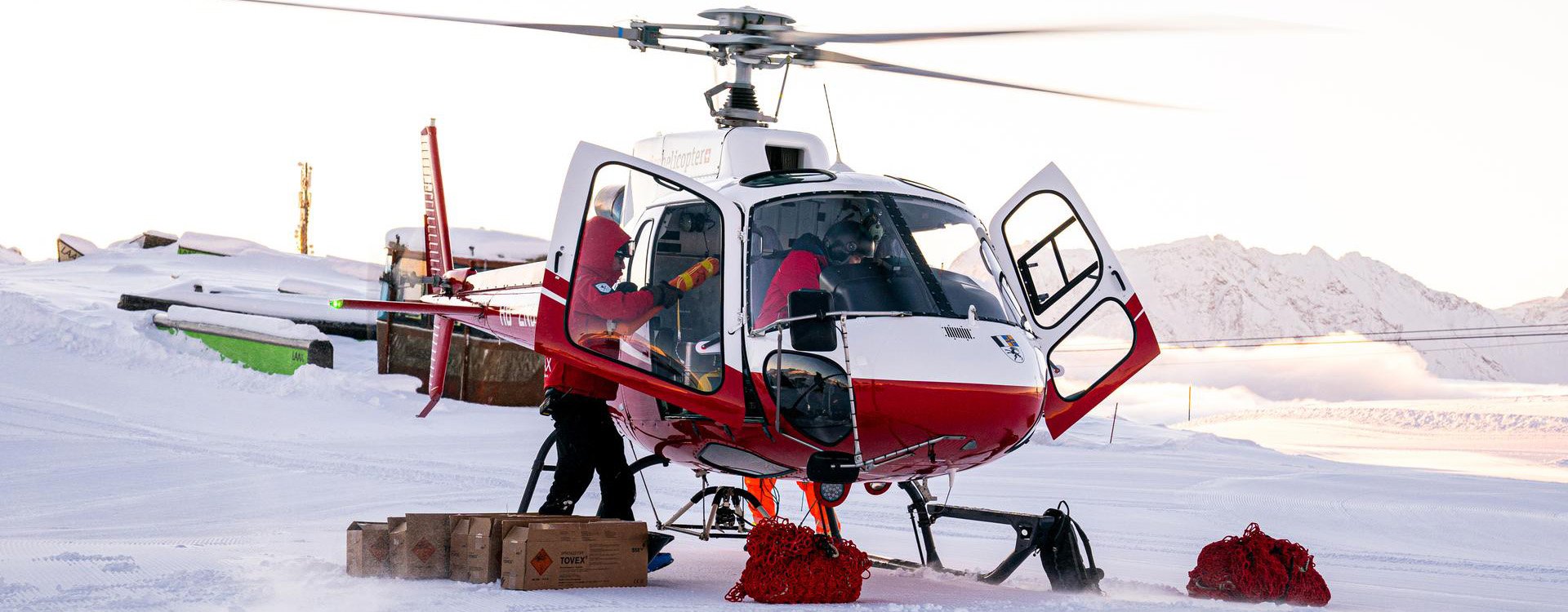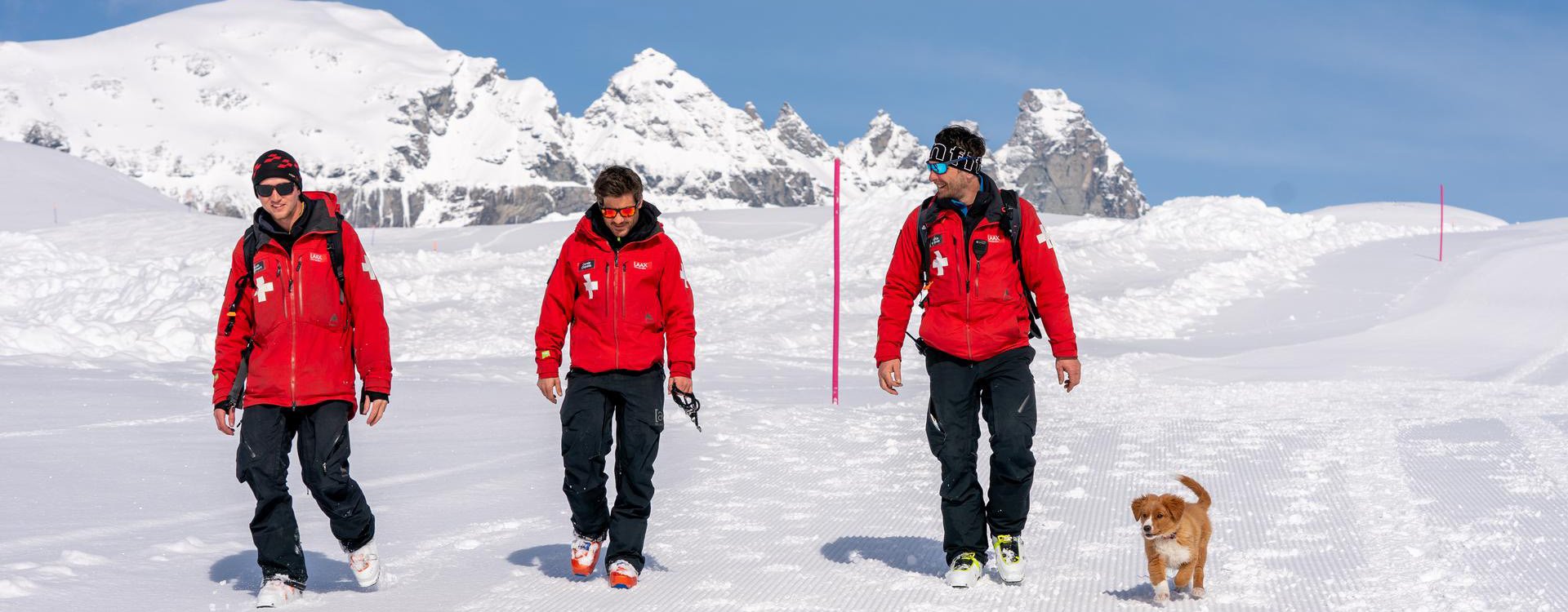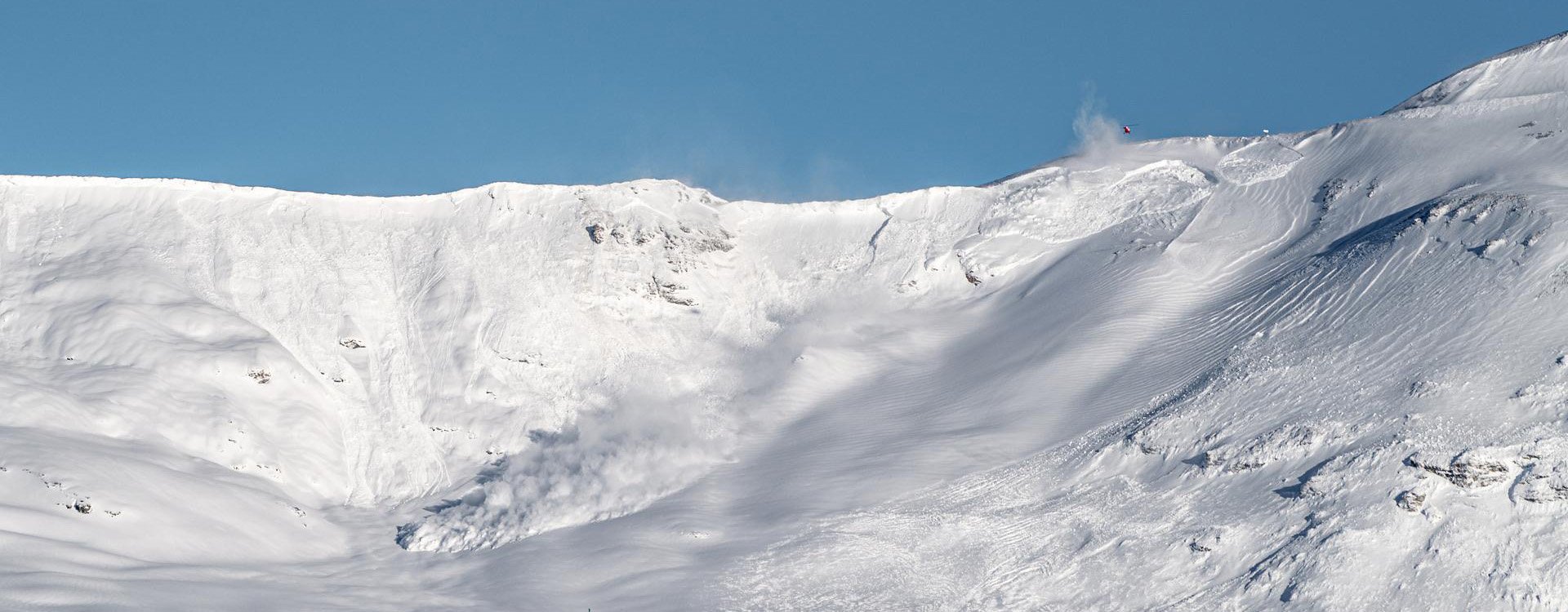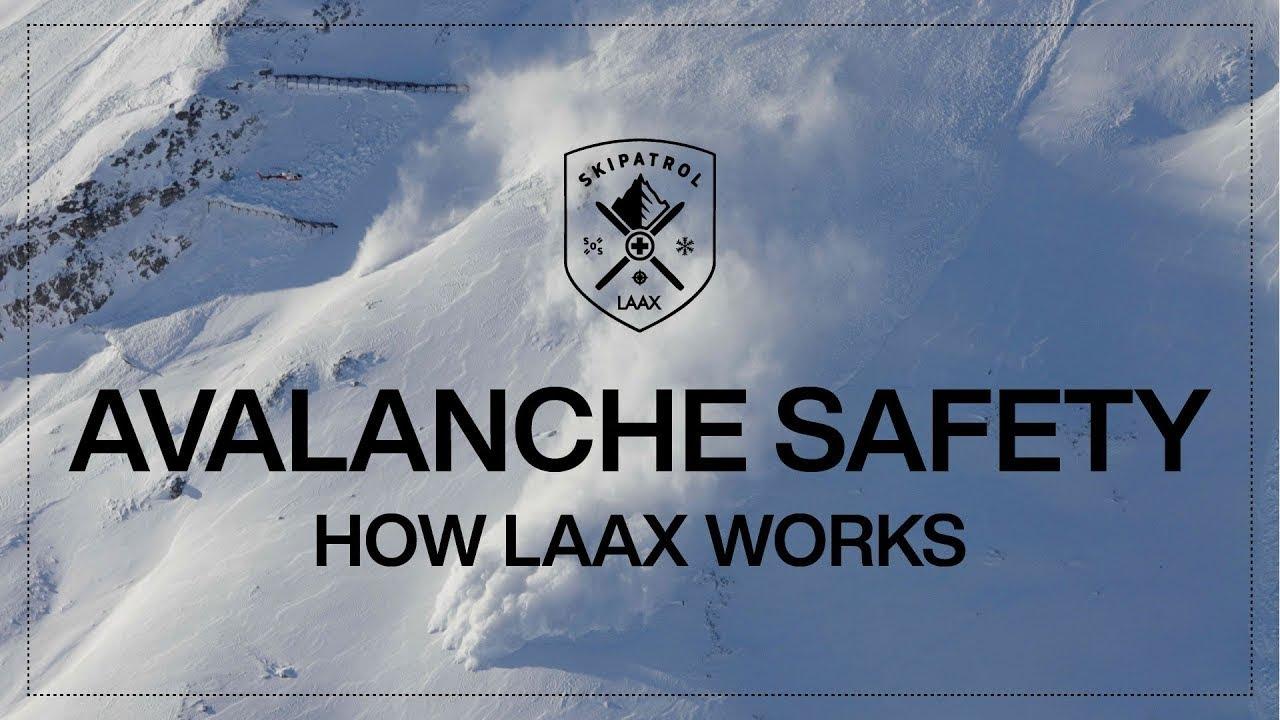Safety first - Avalanche Prevention & Rescue
HOW LAAX WORKS: The mountain rescue team
A team of around 20 mountain snow patrollers are on the job in the LAAX winter sports area. Their work guarantees the safety of all our guests on the marked slopes and freeride routes. An important part of their job is avalanche prevention and preparation for any avalanche with buried victims. In the new How LAAX Works video, we give you an insight into the daily routine of the mountain rescue team. We accompany them during avalanche drills, avalanche dog training, blasting and coordinating the opening of the area.
Avalanche prevention: the work of our snow patrol team
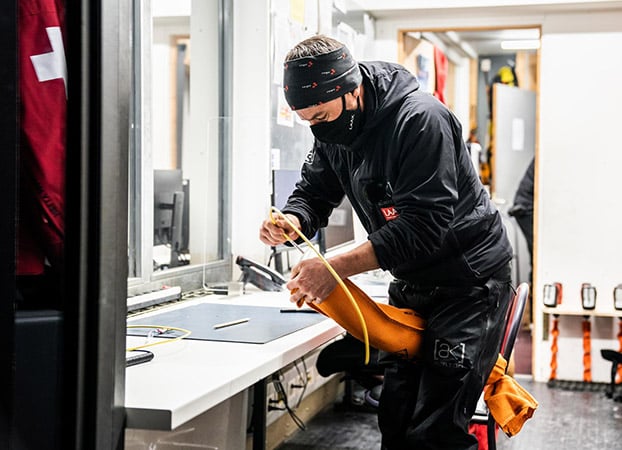
The blasting team
Snow is the most important resource for winter operations - but it also brings dangers. On a day with lots of fresh snow, our snow patrol team get an early start. Already 2-3 hours before the helicopter arrives, the team is on site and prepares the blasting charges of 5 kg explosives each. Blasting by helicopter is essential on snowy days to ensure the safety of our blasting team. From the air, all the avalanche terrains can be evaluated and blasted without having to send patrols into the terrain and expose themselves to risk. As soon as there is sufficient daylight, the helicopter arrives and the previously defined hillsides are approached. From the helicopter, the hillsides are reassessed and a decision is made on the spot as to whether blasting is necessary or not. The explosive charge is then pyrotechnically detonated in the helicopter and set down from the helicopter. As soon as the blasting work is completed, the areas are released at Mission Control.
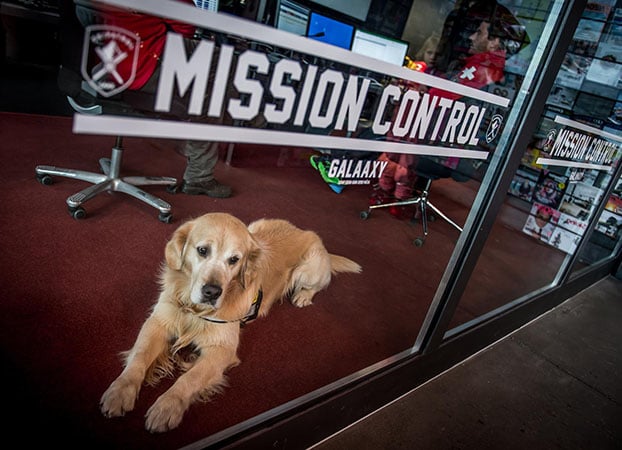
The coordination pros
Mission Control
Mission Control is the hub of the entire team on the mountain. They maintain an overview and ensure the communication of live information to the guest. Their working day starts with checking the preparation tasks. The first thing they do, is check how far along the piste machines are with preparing the slopes, which lifts have already been prepared and how far along the patrollers from the SOS are with blasting. They pass the information on to all the staff so that everyone knows where blasting work is taking place, especially the piste machine drivers, so that no one endangers each other. As soon as the blasting work is completed in a certain part of the area, that part can be opened to carry out further preparatory work. Railway facilities are prepared so that guests can be admitted afterwards.
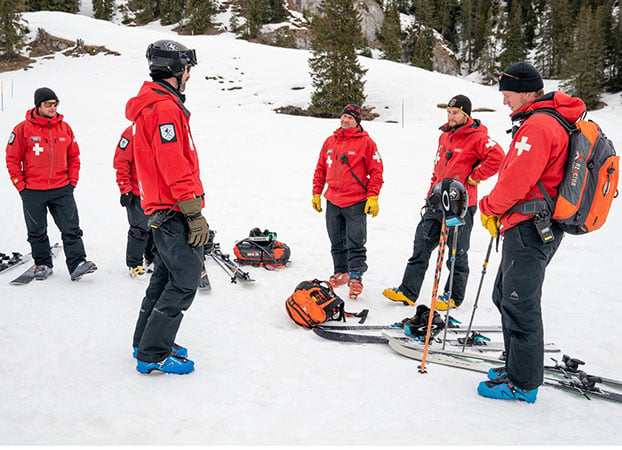
Prepared for the emergency
The rescue team
Avalanche danger is reduced to a minimum through blasting and ongoing assessment of the slopes. Nevertheless, the rescue team must always be prepared for an avalanche event. There are various exercises. Often they are carried out in small groups, this allows for very intensive training. The various exercises include training with the avalanche transceiver (LVS) in the training centre in Plaun or practising new techniques. Every year a large exercise is carried out in which snow sports instructors and all other employees of the Weissen Arena Group are also allowed to take part. The purpose of the exercise is to ensure that, in the event of a major incident, as many people as possible can be called up to assist with the rescue work. For example, for sounding or shovelling.
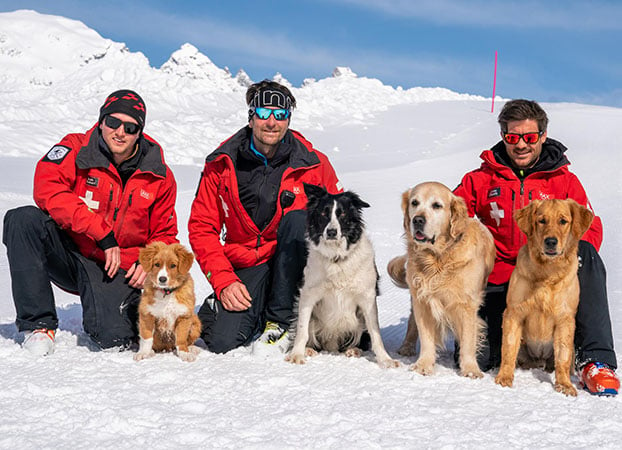
Heroes on four legs
The avalanche dogs
The rescue team consists of strong and experienced women and men. But not to forget the four-legged team members: the avalanche dogs. When choosing an avalanche dog, one chooses a breeding that rather breeds working dogs. Corsin Clopath (right in the picture) is responsible for the two avalanche dogs Lio and Yari: "In my opinion, the dog chooses the owner and not the other way around," he says. Two other members are Lio with his owner Martin Bernold and Noah Reinhart with his puppy Pinu, who is in training together with Yari. The training and operations are carried out by 'Alpine Rettung Schweiz'. After passing the entry test, the training of the dogs lasts two years. In the best case, a dog is ready for action at the age of about three years. At the very beginning, the dog is held by a stranger and the owner shows it a toy. One then runs away from the dog and hides in a snow cave that has already been prepared. The stranger then lets go of the dog and the dog automatically runs into the cave. In the cave, the dog is then rewarded with food or its toy. This way, the furry friends grow up to be true heroes and learn the right behaviour in an emergency in a playful way.
Interview with Corsin Clopath
Winter sports take place outdoors. Those who observe a few rules will be rewarded with an enjoyable and trouble-free experience. Corsin Clopath, piste rescue chief, knows what is important here.

Corsin Clopath, what do guests need to observe regarding their safety?
It is very important to act according to the weather conditions, the number of visitors and, of course, your own ability – and this both on the piste as well as on the pipe and in the parks. It is also important to observe all markings and signals of the piste rescue service. A very good basis for conduct are the ten rules of the International Ski Federation FIS.
Does the material also play a role?
Yes, it is dangerous if you have the wrong material under your feet. It isn’t, for example, ideal if you,
as an average skier, are using slalom skiers as though you are in the world cup – these skis can be unforgiving and diffi cult to manoeuvre.
What about risks away from the pistes and downhill routes?
Open skiing terrain harbours vari ous dangers as it is not secured against avalanches and other alpine risks by the piste rescue service. It is very important that freeriders are familiar with the subject snow and avalanches and know how to behave in alpine terrain.
What should freeriders be equipped with?
They should always wear a helmet, as on the piste, and have a backpack with an avalanche transceiver, shovel, sounding stick and small fi rst-aid kit and, of course, a mobile for raising the alarm. But, more importantly, they should also know how to use this equipment, and this requires a great deal of practice. New this winter season is the Avalanche Training Centre (ATC) in Plaun, where you can practise using avalanche transceivers.

